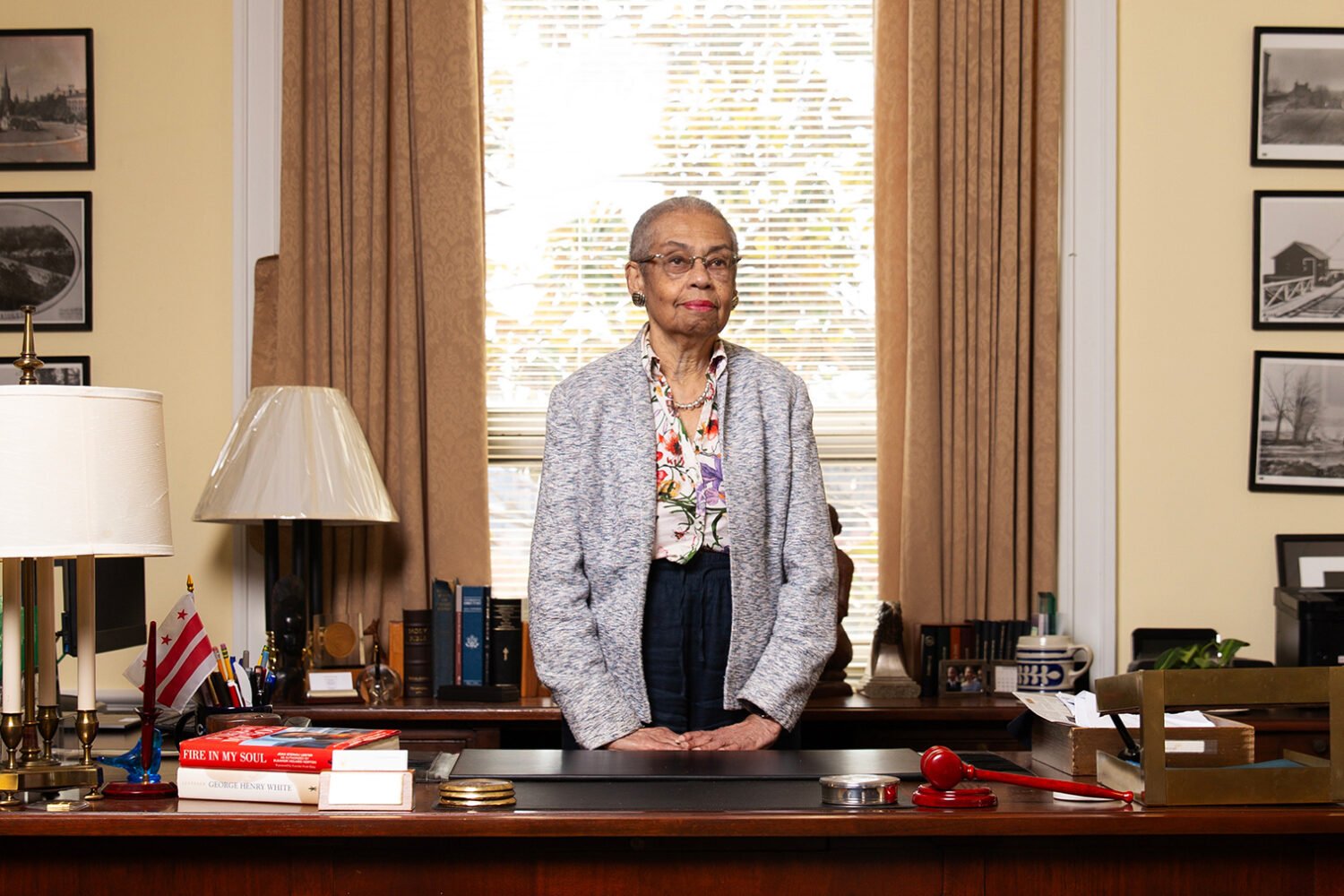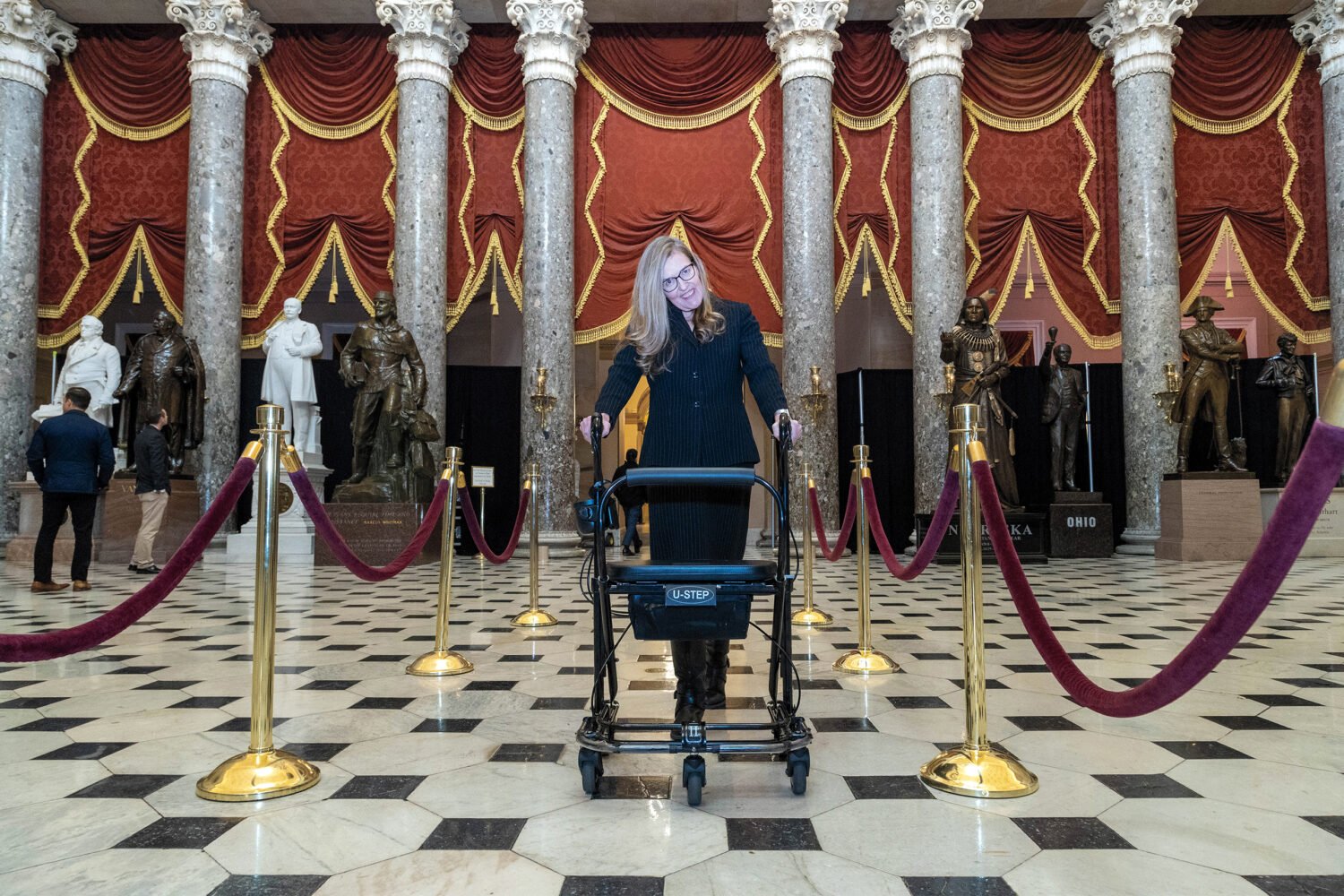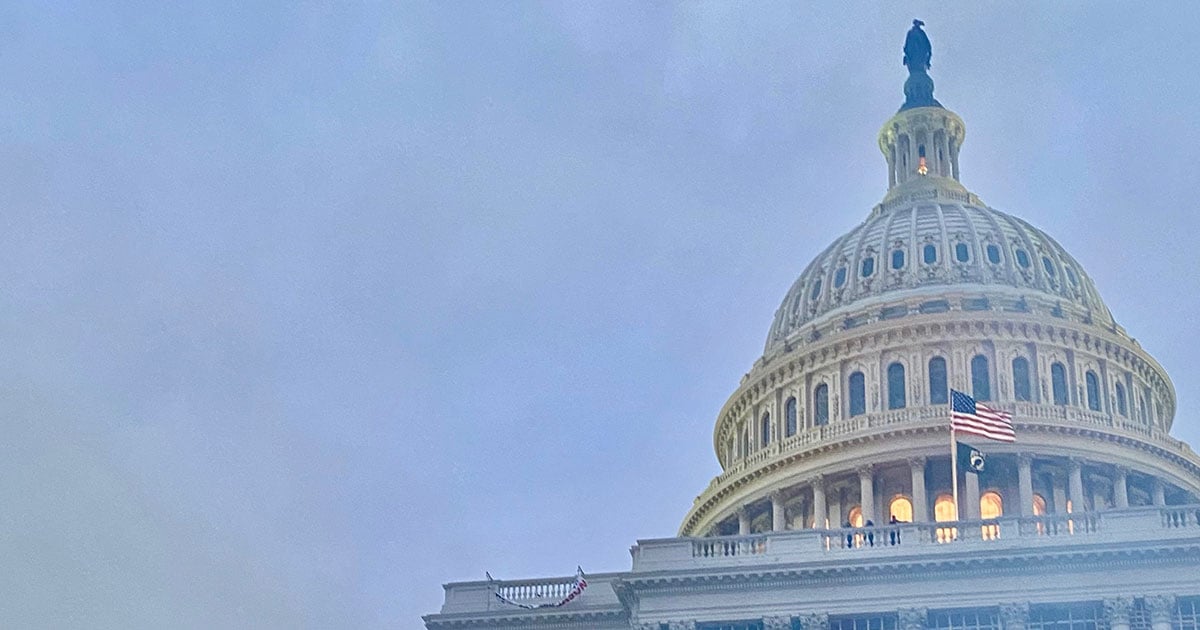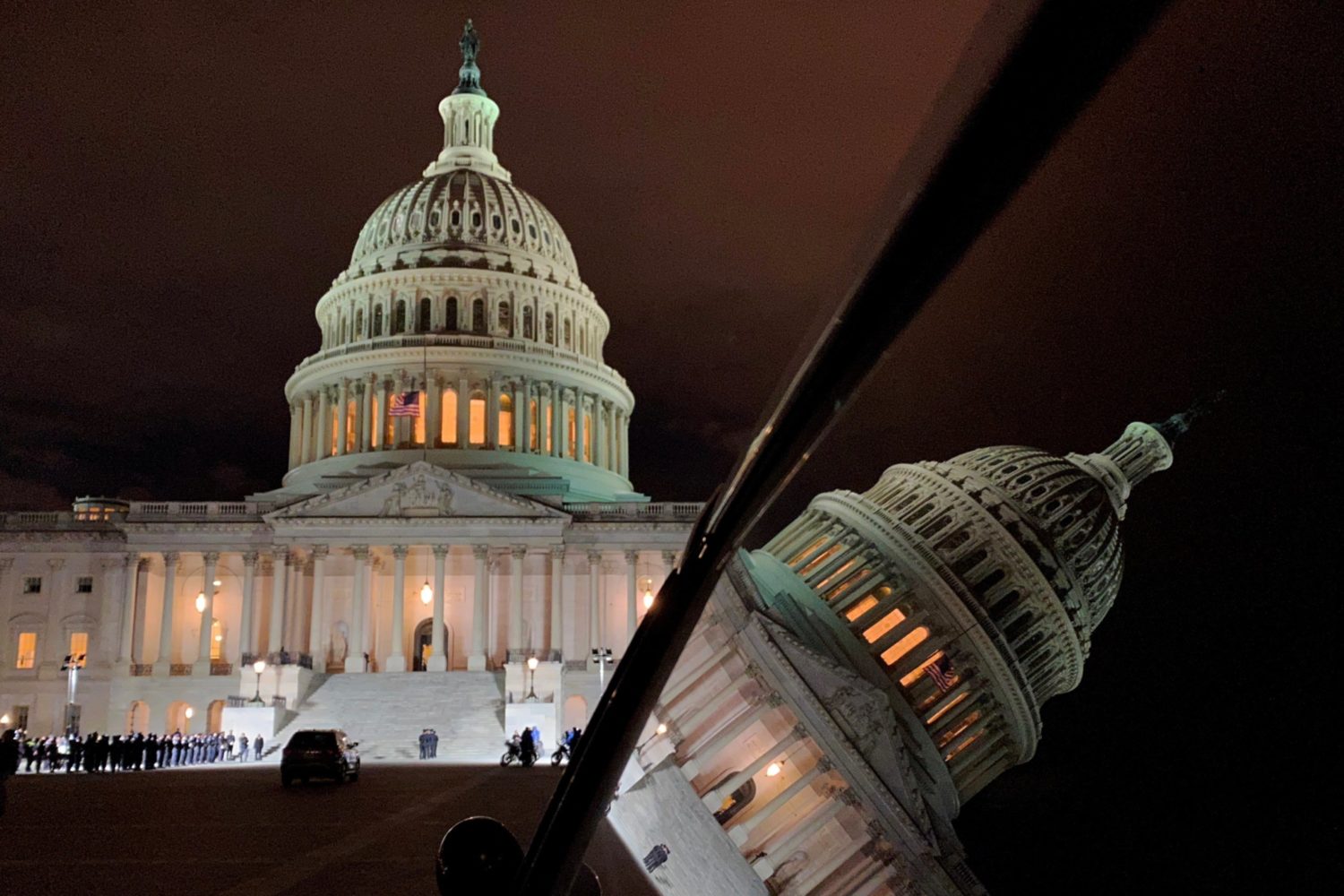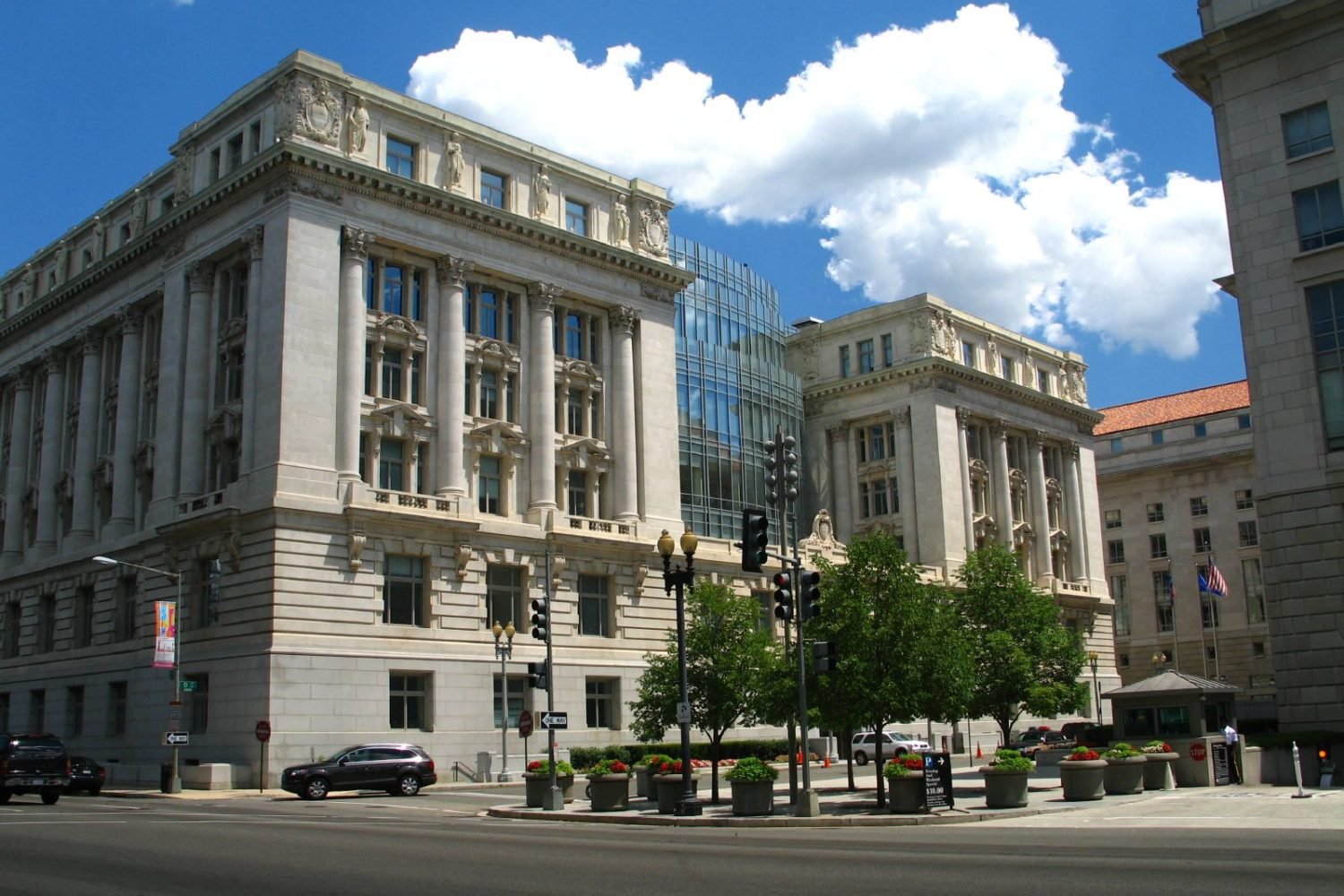Along a dim corridor in the Longworth House Office Building sits a mausoleum to the political dead. The departed is former House speaker John Boehner, now memorialized by the office of his successor from Ohio’s 8th District: Warren Davidson, a 47-year-old founder of an industrial-tool company and political novice who belongs to the far-right Freedom Caucus, which ushered in Boehner’s demise.
Davidson—a burly figure with a crest of blond hair and a squinty, boyish grin—has already adjusted nicely to his new job. The House freshman is the author of what might be the most Trumpian proposal of this Congress: the “Drain the Swamp Act of 2017,” a Tea Party fantasia that seeks to alter its hated Washington forever. In one swift move, the measure would uproot the region’s leading industry and redistribute it around the country.
“I think it would be a good idea to move most of the federal government,” Davidson says in his confined office, where Boehner’s hand-me-down law books span the walls. “I really want people to take this as a serious proposal. It could fundamentally change the relationship between people across the country and their government.”
It would work like this: The Swamp Act calls for federal agencies to relocate their headquarters, thereby vacating 90 percent of their employees from Washington. In 2018, agency directors would identify a new home base, with special attention to cost savings and national security. In 2023, the exodus would begin. Davidson thinks the IT revolution means there’s little reason to keep government in one place. Instead, federal power should reside closer to the people—in Cleveland, say, or Oklahoma City—emancipated at last from the Potomac Gomorrah. (Rejoice not, Trump haters: The White House, and its executive offices, would be spared.)
Though Washington-baiting is an emblem of today’s right, Davidson defends his proposal wielding all manner of ideological argument. He hopscotches from leftist principles of wealth redistribution and infrastructure (think of all those jobs it will create around the country) to conservative resentment against bureaucratic buttinskies. Forced to live outside the federal city, the logic goes, government workers would be warier of issuing taxes and regulations. He cites the machinations of big business: “Corporations move all the time!”
Yet his unmistakable charge is populist. “Five of the richest counties in America are right here,” he notes, correctly. “Clearly the city does not generate that proportion of wealth in America. It’s skewed.” The region, Davidson suggests, is getting rich off of everyone else—or it sure looks that way.
By design, the scheme would upend the lives of federal employees, not to mention private-sector workers and owners of property or a business here. Imagine the fury of real-estate brokers or car dealerships around Palo Alto if Google announced its departure to Boise, Hewlett Packard to San Antonio, and Facebook to Moline, Iowa, all at the same time.
No surprise, then, that the most vocal opponents are in the Washington area’s congressional delegations, which offer rather more substantive critiques. Eighty-five percent of civilian federal employees—the Transportation Security Administration, the IRS, Immigration and Customs Enforcement agents—already live outside Washington, says Eleanor Holmes Norton, the District’s delegate to Congress. Moreover, she warns, the measure would exact major consequences: a bitter fight for turf, a breakdown in agency coordination, an enormous taxpayer bill just for the relocation. “And what’s the necessity?” Norton expels a hoot of high-pitch pity. “I’m trying to make it look like exactly what it is. Silly.”
Go ahead, laugh. A freshman from the Freedom Caucus—a crowd not typically celebrated for legislative finesse—is pushing a splendid chimera, whose only usefulness might be to give Trump voters a nocturnal emission. (Jason Chaffetz, departing GOP chairman of the powerful committee with oversight of DC laws, developed an identical concept, a nonbinding resolution dubbed “Divest DC.”) And yes, Davidson’s bill has gone nowhere quickly.
Yet this seemingly far-right scheme has a recent history that transcends political divisions. Conservative pundit Ross Douthat of the New York Times has lent plaudits to the theory, as has a liberal counterpart, Matthew Yglesias of Vox. Congressman Tim Ryan, also from Ohio—but a Democrat—is pushing a measure similar to Davidson’s Swamp Act.
“This was just part of the zeitgeist,” Davidson says with a shrug. Which makes the very thought experiment worth interrogating. Would hijacking the federal government and hurling it out of Washington really be a baseless, irrational idea?

David Fontana, a law professor at George Washington University and a Democrat, has spent four years working on his own version of a grand relocation, the topic of his upcoming book. But Fontana was dismayed at the response to Davidson’s and Chaffetz’s proposals. “Republicans see this as another anti-government scheme,” he complains. “But it was the condescension from Democrats about the idea that was equally disappointing.
“This is actually a deep tradition,” he goes on. “FDR, Reagan, Clinton—they’ve each thought seriously about these proposals.” Franklin Roosevelt produced the big bang of the modern bureaucracy; Ronald Reagan’s aspirations were rhetorical. Though the idea never made it into Bill Clinton’s famous “Reinventing Government” initiative, it was circulated briefly during his presidential transition.
The right-wing version of relocating Washington imagines that a heartland headquarters would mean a less activist government, but the liberal version envisions something of the opposite.
Fontana grew up in Plattsburgh, New York, in the Adirondacks. Like much of the talented youth, he left, studying at UVA, Yale Law, and Oxford. His participation in a timeworn exodus from rural America came to inform his key argument for relocation: that Washington’s centralization and peremptory customs act as a kind of tax, filtering out talent and perspectives from across the country. In 2016, when his home region switched allegiance from Obama to Trump, Fontana began to think that decentralization might be more than a performance enhancer—it might be a kind of civic inoculation against the inchoate appeal of Trump’s populism.
Fontana’s concept differs from the Swamp Act in a significant way. Although he and Davidson agree that headquarters should move, Fontana says it’s more important that agency leadership pack up. “We’re talking about a much smaller amount,” he says, not 90 percent, a figure he calls “a horrible idea.”
Fontana points to the Federal Reserve, whose regional banks feed information back to its central policymakers. They “made Washington understand regional economies much more precisely,” he says. Fontana’s rethinking of government would be much the same—key agencies placed in different regions, outside the lawyer-centric worldview of the Washington area. “The government needs to empower different kinds of places,” he says, “in order to harness different kinds of people.”
That, in essence, is the liberal argument for decentralization. It visualizes power as a kind of national resource, something to be distributed equitably. Whereas Reagan thought the scariest thing was a government bureaucrat on your doorstep, offering to help, Fontana thinks it’s vital: Not unlike Medicare, access to a national resource such as federal power might buttress voters’ confidence in government. Rather than starving the beast, Americans might come to embrace it.
Right-wing sponsors see it as a way to slash government. But at least some liberals like the idea of spreading wealth around the country.
In the private sector, ideas like Davidson’s and Fontana’s have been in vogue for more than a decade. In 2001, Boeing announced it would relocate its headquarters from Seattle to Chicago. But only top management made the move—a maneuver known as “optimizing” a headquarters. The logic was that Chicago was located in between Boeing’s manufacturing hubs (while some saw an attempt to flee Seattle-based machinist unions).
Although corporations have historically housed employees under one roof at a single campus—such as GE, whose former CEO Reginald Jones plopped it into the Elysian suburbs of Connecticut—today many are following Boeing’s example, says David Collis, who teaches corporate strategy at Harvard. “They’re saying, ‘Okay, here are the 28 things we do. What’s the optimal location of each one?’ ” One of the next “optimizers” is GE, which plans to move its senior-manager ranks from Connecticut to Boston.
The companies are in the teeth of this century’s major economic trend, the tremendous growth of the largest American cities and the rise of productivity that coincides with an increase in population density—a phenomenon called “agglomeration economies” that Harvard economist and bestselling author Ed Glaeser helped make famous. Cities, according to Glaeser’s work, cultivate innovation and prosperity by reducing the transmission time of ideas, not just goods and services—part of the prize that Boeing and GE are chasing in Chicago and Boston.
The question, however, is whether cities and their towers of brainpower and wealth are the right places to house your government, not just your business.
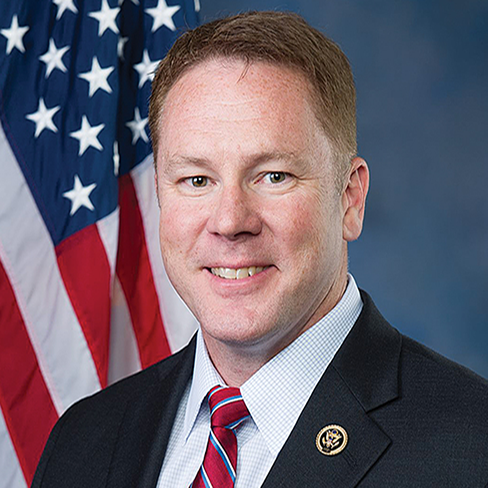 Ohio GOP Congressman Warren Davidson wants to move 90 percent of each federal agency's staff out of Washington.
Ohio GOP Congressman Warren Davidson wants to move 90 percent of each federal agency's staff out of Washington. George Mason economist Stephen Fuller predicts economic death for the region if it happens.
George Mason economist Stephen Fuller predicts economic death for the region if it happens.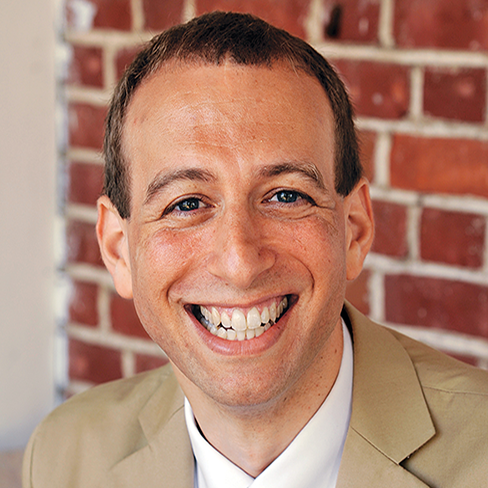 GW's David Fontana has a different idea: Keep the civil servants here but move the Cabinet secretaries.
GW's David Fontana has a different idea: Keep the civil servants here but move the Cabinet secretaries.
For people who actually want government to be good at its job, a move could spell bad news. “If you scatter things around too much away from the capital, you make it a lot harder to make the government work better,” says Don Kettl, a professor at the University of Maryland’s public-policy school. “Think about the implications. The President wants to have a meeting of the Cabinet. Can they no longer gather the Cabinet together because the Secretary of the Interior has his headquarters out in Denver? Or the Secretary of Health and Human Services is in Kansas City?”
“It’s one thing to transmit [work] electronically,” Kettl goes on. “It’s a much bigger question when you need to get people in the same room [to discuss] homelessness for veterans or reducing crime on Native American reservations.”
Indeed, a growing body of research speaks to the benefits of in-person collaboration. Evidence suggests that the more people you encounter in an office, the better knowledge transmits. It’s the reason that the best collaborative workers in any workplace are often clustered around the most heavily trafficked place—the toilets.
Meanwhile, the corporate mavens who brought us FaceTime’s virtual meetings are turning from it. Remember when Marissa Mayer became CEO of Yahoo in 2012 and required grumbling employees to return to the physical office? While “optimizing” headquarters continues to captivate manufacturing conglomerates, companies such as Apple and Google are sparing no expense on palatial campuses designed to stuff everyone under one glittering roof.
Why this divide? One explanation might be historical. Companies that build things tend to gain efficiencies by spreading out, especially in manufacturing clusters—that’s why Boeing builds fighter jets in Missouri, civilian craft in Seattle, and fuselage in Wichita. But companies that traffic in the knowledge economy, where stock performance hinges on ideas as much as on objects, must rely on an urgently creative hothouse—one in which every cubicle, as it were, is the toilet. But which of those categories better describes government?
It may not matter. Decentralizing could backfire on conservatives, making the government virtually impossible to cut, Kettl warns: “There would be a brawl among every member of Congress about who most deserves the headquarters for a federal agency, and not only for the jobs. Who wouldn’t want to be the federal center for IT or health-science research or environmental policy?”
Locations would be doled out not by logic but by which state had the most senior lawmakers—the same absurdity that explains why NASA talks to astronauts from Houston (LBJ) and why the FBI sends fingerprints to Clarksburg, West Virginia (Senator Robert Byrd). Hundreds more lawmakers would be angling to bring a piece of the action to their districts—instead of satisfying right-wing urges to strangle government, you could end up incentivizing bigger budgets.
That’s what happened in what is perhaps the only large-scale precedent for Davidson’s uprooting ambitions: the FBI fingerprint lab that the late Senator Byrd helped transfer to his home state.
In 1995, the FBI’s Criminal Justice Information Services Division left Washington for Clarksburg, a town selected essentially at random. The bureau took two years to transition into the new building, an effort that came at immense cost—and not just for the construction. To entice its staff of 3,000 to move, the FBI bused them to Clarksburg, renting out the town’s Holiday Inn for three years as employees searched for homes. In the end, only about 500 employees went for it. (The division’s 400 Washington contractors came, too.) There were costs of inconvenience as well. In Clarksburg, CJIS assistant director Chuck Archer had to acclimate to videoconferencing, and top-level staff flew back and forth to Washington weekly.
Yet almost immediately, CJIS saw a shift. In DC, the division had an attrition rate of 14 percent, one of the government’s worst. In Clarksburg, a town that previously struggled as a sleepy off-ramp along I-79, the attrition rate plunged to nearly zero and productivity ticked up. “For people who couldn’t get jobs, now there were jobs for everybody,” Archer says, and locals “were proud to go home and tell their families they were working for the FBI.”
Once-vacant Clarksburg became unrecognizable. It’s now a leading biometrics hub that has attracted a dozen major companies. But the town also entered the bloodstream of the FBI. CJIS staff has made appearances at the local Rotary Club and motocross track, and it forged agreements with West Virginia University to funnel young engineers into well-paying jobs. Locals were permitted to hunt deer and turkey on the division grounds. “It certainly changed us,” Archer recalls, chuckling. “If hunting is the least of your problems, you don’t have any real problems.”
He and others in the FBI emphatically describe the move as one of the best things that ever happened to them—as do Clarksburg residents. “I know West Virginia and rural states have a reputation of people who are anti-government,” says Jamie Metz, who directs the Harrison County Economic Development Corporation. But he adds: “For both sides, it’s been a wonderful relationship. I never hear anything negative from this community. Never.”
Place, in other words, really does affect people.
Will the Interior Secretary’s new residence in Billings make her more or less likely to be a neutral decision-maker?
You can draw two lessons here. To Fontana, the story of Clarksburg suggests that decentralization could have potential benefits. To Kettl, it points to a deeper problem. “The dilemma that’s existed, time immemorial, is how much of your operations do you base in headquarters and how much in the field?” he says. “The British Empire discovered this in their colonies. They begin to think more like the people they were governing and drift toward local interests.” When the feds must face an armed libertarian rancher claiming a chunk of federal land, will the Interior Secretary’s new residence in Billings make her more or less likely to be a neutral decision-maker?
Colonization, of course, didn’t end well for the occupiers. Says Kettl: “The really interesting question is what happens to Washington.” Could we survive the death of Washington, DC?
In the year 2038, the mood in Washington is triumphant: The city—long stripped of its federal agencies—is thriving. Construction just wrapped on a new airport, after far-away agencies brought a deluge of inbound flights. Thanks to the billions in aid pledged by the government as a sweetener, commuting is easier on newly improved Metro and roadways. The disembowelment of nearly 700 federally controlled buildings has sparked a real-estate gold rush and better housing prices—a magnet for young talent. Like a fire that clears the forest floor, the local economy took a hit but was forced to diversify. The area has now positioned its universities and educated workers as a major research hub, and has more jobs than before. Meanwhile, a grateful nation celebrates an infrastructure boom and the government finds it easier to recruit younger employees.
In the year 2038, the mood in Washington is tragic: The region is a wasteland. Loss of demand shuttered hundreds of businesses—the restaurants were the first to go. More reliant than ever on tourism, the city plies visitors with deals and vouchers, but for weary residents, it begins to feel like Epcot Center. The arts struggle, and the opera shutters. Regulators fly to three cities to give the same report, enraging taxpayer groups, while the lobbying industry, in its unfathomable luck, has doubled—firms race to tame the West, opening shop all over the country even as their numbers in DC grow. They’re the only game in town now. The area’s federal contractors, which previously delivered nearly double the economic benefit of the feds, left long ago.
This Dickensian tale isn’t just about Washington in the hypothetical future but also about Bonn, Germany, in the very real past.
After the Berlin Wall fell, Germany faced a sudden question—what to do about its capital, which had sat in the drowsy village of Bonn since the end of World War II. Proponents pushed for Berlin. “There was a huge amount of uncertainty for the regional economy,” says Jeffrey Anderson, a German-politics expert at Georgetown, who was then living in Bonn. The doomsayers warned of economic death for Bonn. (“Born 1949, died 1991. Passes away at age of 42,” one opposition poster said.) Government workers “were absolutely petrified,” Anderson continues. “There was this thought that they’d be given a choice of uprooting themselves where they’d lived for a generation, and having to move all the way to Berlin, or face the prospect of quitting their career.”
The Bundestag ultimately voted to transition to Berlin over seven years, leaving roughly a third of government functions in Bonn. What happened next was an amalgam of both of the aforementioned scenarios. People were outraged at waste—the dual system costs $8.4 million each year to sustain, not to mention Bonn’s initial $2.2-billion sweetener and the move costs—and the city struggled with the loss of workers and its identity.
Anderson says the multi-capital system did little to buoy civic trust: “The idiocy of ferrying files between Bonn and Berlin, and civil servants having to use taxpayer money . . . to visit ministries that 15 years ago they could have just walked across the street to talk to? If anything, on the very small margins, it’s kind of reinforced skepticism that government people know what they’re doing.” (Imagine how often agency leaders in far-flung US cities would fly back to Washington to curry favor with—or “brief”—their bosses in the capital.)
Yet in the end, Bonn excelled. It rebranded itself as a medical-research hub, expanded its airport, and last year saw record employment. The country has seen unexpected benefits as well. On average, Berlin civil servants are five years younger than those in Bonn—suggesting that a change in scenery could attract young talent.
When Germany’s bureaucracy moved to Berlin, Bonn didn’t collapse—thanks partly to huge government subsidies.
Germany is hardly a perfect parallel. The country’s reunification, and the reestablishment of Berlin as its capital, was an emotional high for many. Yet Bonn illustrates how capitals move, split, and mutate often, says Vadim Rossman, a University of Texas at Austin PhD and one of the leading researchers on capital relocations. His new book, Capital Cities, examines the history of modern capitals, including the dozen-plus countries with spread-out capitals like Germany’s—whose high court, parliament, and agencies span three cities. “When I read about [Davidson’s] proposal, I was surprised it was treated as an eccentric idea,” says Rossman, who lives in St. Mary’s County, Maryland. “I actually don’t think this is a crazy idea at all.”
Around the world, cities have themselves become symbols of inequality, as the regions between metropolis and hinterland grow more unequal—a trend especially true in the US. To Rossman, that’s one reason proposals like Davidson’s are proliferating. By his count, 37 countries are debating whether to decentralize or relocate government functions, including those riven by populist turmoil, such as Korea, the Philippines, and Britain—where Nigel Farage’s UKIP party, of Brexit fame, has made department relocation a hallmark of its political assault on London. “It is not an accident,” says Rossman, “this is all happening at the same time.”
Rossman estimates that the economic value of a capital status—and losing it—is 3 to 4 percent of gross regional product. If you’re Richard Florida, the urban theorist at the University of Toronto whose work on agglomeration economies closely aligns with Glaeser’s, that figure is full of possibility. Florida’s research suggests that behind the thick foliage of the company town is an ecosystem of economic diversity. “DC has much less risk than Bonn,” he says. “Washington is no longer just a government town.”
But the region’s leading economic analyst, Stephen Fuller, says you might as well write Washington’s obituary. “We are slowly diversifying, but it hasn’t really happened yet,” says Fuller, of George Mason’s Center for Regional Analysis. The Washington economy supports 3.2 million jobs, about 800,000 of which are federally funded or contracted, an exodus of a magnitude that Fuller thinks would be fatal. Amid a comparatively mild federal pullback, our region’s job growth underperformed Detroit’s between 2010 and 2016. Even the mere threat of budget cuts in the Trump era could thwart growth. “Who wants to sign onto a ship that has a leak in it?” Fuller says.
Even if Davidson has the hour of history on his side—and even if his swamp-draining compatriots have the best of intentions—it seems impossible to miss the tinge of nihilism in the Swamp Act, evinced by the measure’s heftiest and unanswered question: Where would the government go?
Back in his office, Davidson dodges. “I’d take Treasury,” he deadpans. “But that’s for the agencies themselves to decide.”
Should agencies transplant to where they can be enriched by the talent pool—or should they enrich their new hometowns, like Clarksburg? Although the FCC would be far more comfortable in Silicon Valley than in Topeka, the prospect of more government bureaucrats hobnobbing with the tech class is a cure that seems worse than the disease. Should the government capitulate to the economic trends that have divided the country—urban wealth, gentrification, income inequality—or buck them?
Your answer—and the greater case for disaggregation—hinges largely on personal conceptions of government. Either government strikes you as more like Boeing and GE—minimizing the transportation cost of administrative goods and services, with a foothold in multiple cities—or more like a Google, lubricating the transmission of ideas: an aspirational mecca of raw intellect and ambition, where creative thinkers have convened to better humanity.
It gestures at a larger question, one that both the optimizers and stay-putters must answer: What, exactly, are we trying to improve? The efficiency of government or the lives of voters who distrust it?
You have time to think about it. Despite Davidson’s optimism, a few other crises are preoccupying the capital. It seems safe for now.
Ben Wofford (benjamin.d.wofford@gmail.com) is a contributing editor at Politico Magazine and writes for Rolling Stone.
This article appears in the July 2017 issue of Washingtonian.
Prop styling by Wendy Schelah at Halley Resources

